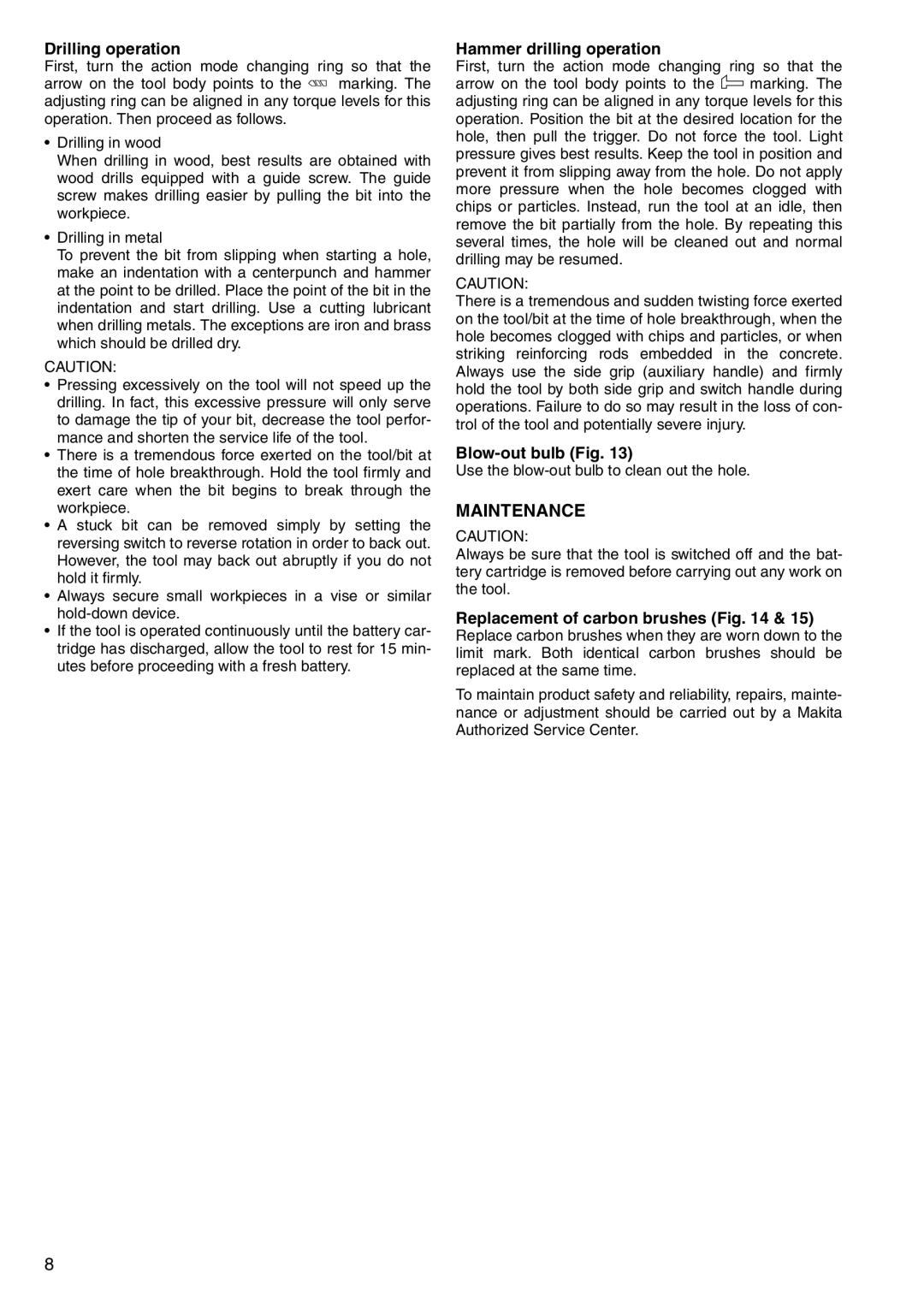Drilling operation
First, turn the action mode changing ring so that the arrow on the tool body points to the M marking. The adjusting ring can be aligned in any torque levels for this operation. Then proceed as follows.
•Drilling in wood
When drilling in wood, best results are obtained with wood drills equipped with a guide screw. The guide screw makes drilling easier by pulling the bit into the workpiece.
•Drilling in metal
To prevent the bit from slipping when starting a hole, make an indentation with a centerpunch and hammer at the point to be drilled. Place the point of the bit in the indentation and start drilling. Use a cutting lubricant when drilling metals. The exceptions are iron and brass which should be drilled dry.
CAUTION:
•Pressing excessively on the tool will not speed up the drilling. In fact, this excessive pressure will only serve to damage the tip of your bit, decrease the tool perfor- mance and shorten the service life of the tool.
•There is a tremendous force exerted on the tool/bit at the time of hole breakthrough. Hold the tool firmly and exert care when the bit begins to break through the workpiece.
•A stuck bit can be removed simply by setting the reversing switch to reverse rotation in order to back out. However, the tool may back out abruptly if you do not hold it firmly.
•Always secure small workpieces in a vise or similar
•If the tool is operated continuously until the battery car- tridge has discharged, allow the tool to rest for 15 min- utes before proceeding with a fresh battery.
Hammer drilling operation
First, turn the action mode changing ring so that the arrow on the tool body points to the X marking. The adjusting ring can be aligned in any torque levels for this operation. Position the bit at the desired location for the hole, then pull the trigger. Do not force the tool. Light pressure gives best results. Keep the tool in position and prevent it from slipping away from the hole. Do not apply more pressure when the hole becomes clogged with chips or particles. Instead, run the tool at an idle, then remove the bit partially from the hole. By repeating this several times, the hole will be cleaned out and normal drilling may be resumed.
CAUTION:
There is a tremendous and sudden twisting force exerted on the tool/bit at the time of hole breakthrough, when the hole becomes clogged with chips and particles, or when striking reinforcing rods embedded in the concrete. Always use the side grip (auxiliary handle) and firmly hold the tool by both side grip and switch handle during operations. Failure to do so may result in the loss of con- trol of the tool and potentially severe injury.
Blow-out bulb (Fig. 13)
Use the
MAINTENANCE
CAUTION:
Always be sure that the tool is switched off and the bat- tery cartridge is removed before carrying out any work on the tool.
Replacement of carbon brushes (Fig. 14 & 15)
Replace carbon brushes when they are worn down to the limit mark. Both identical carbon brushes should be replaced at the same time.
To maintain product safety and reliability, repairs, mainte- nance or adjustment should be carried out by a Makita Authorized Service Center.
8
